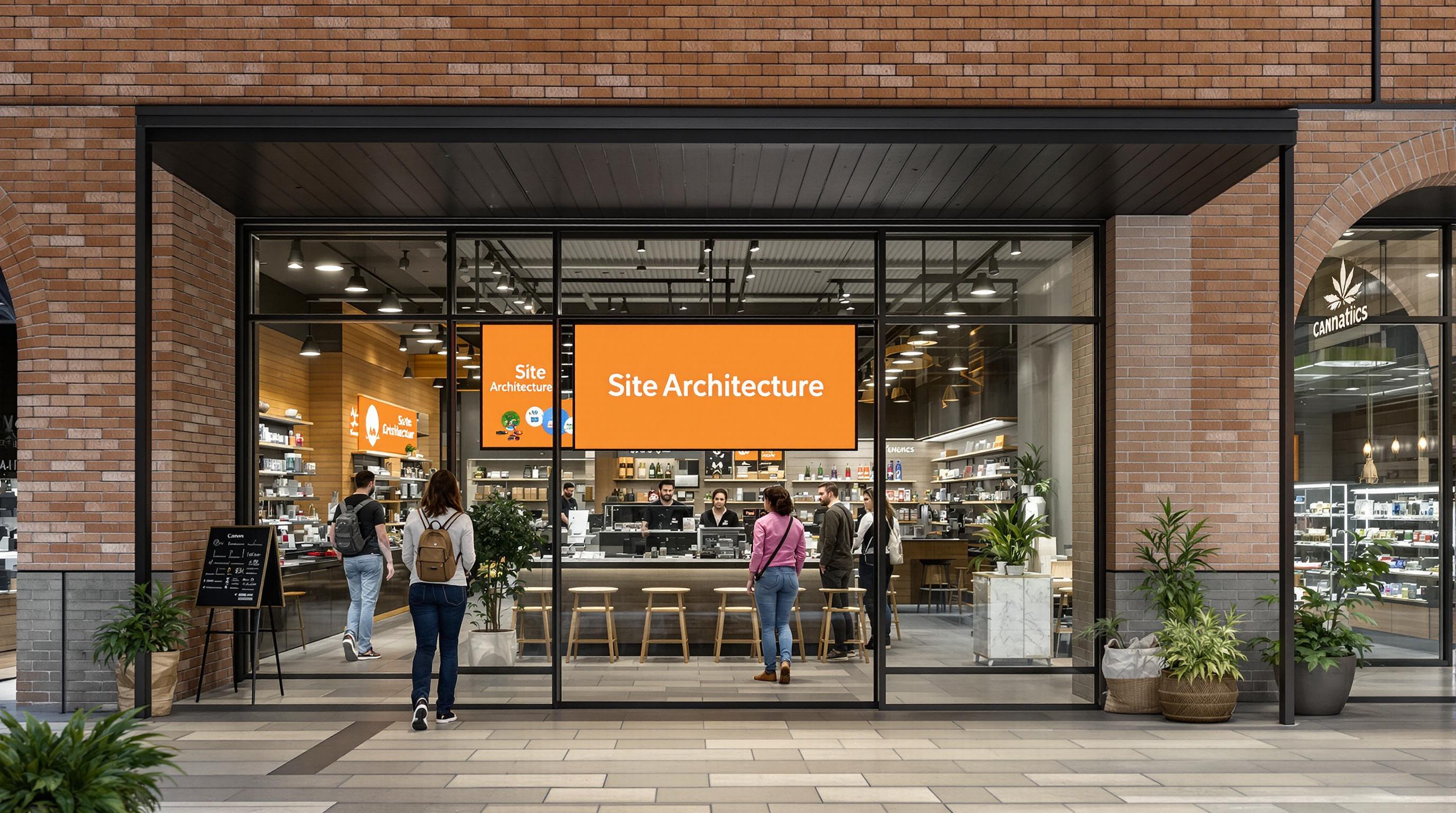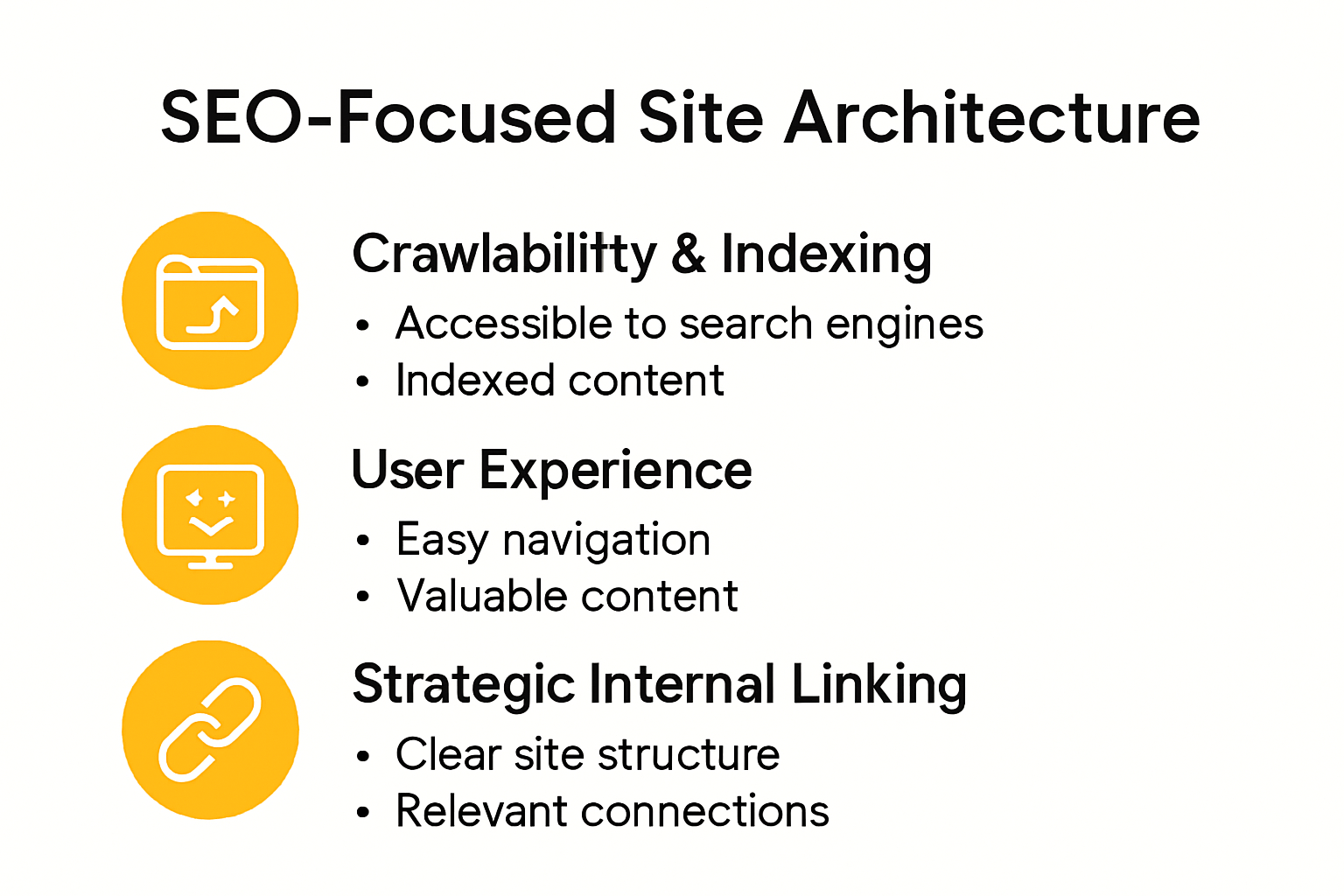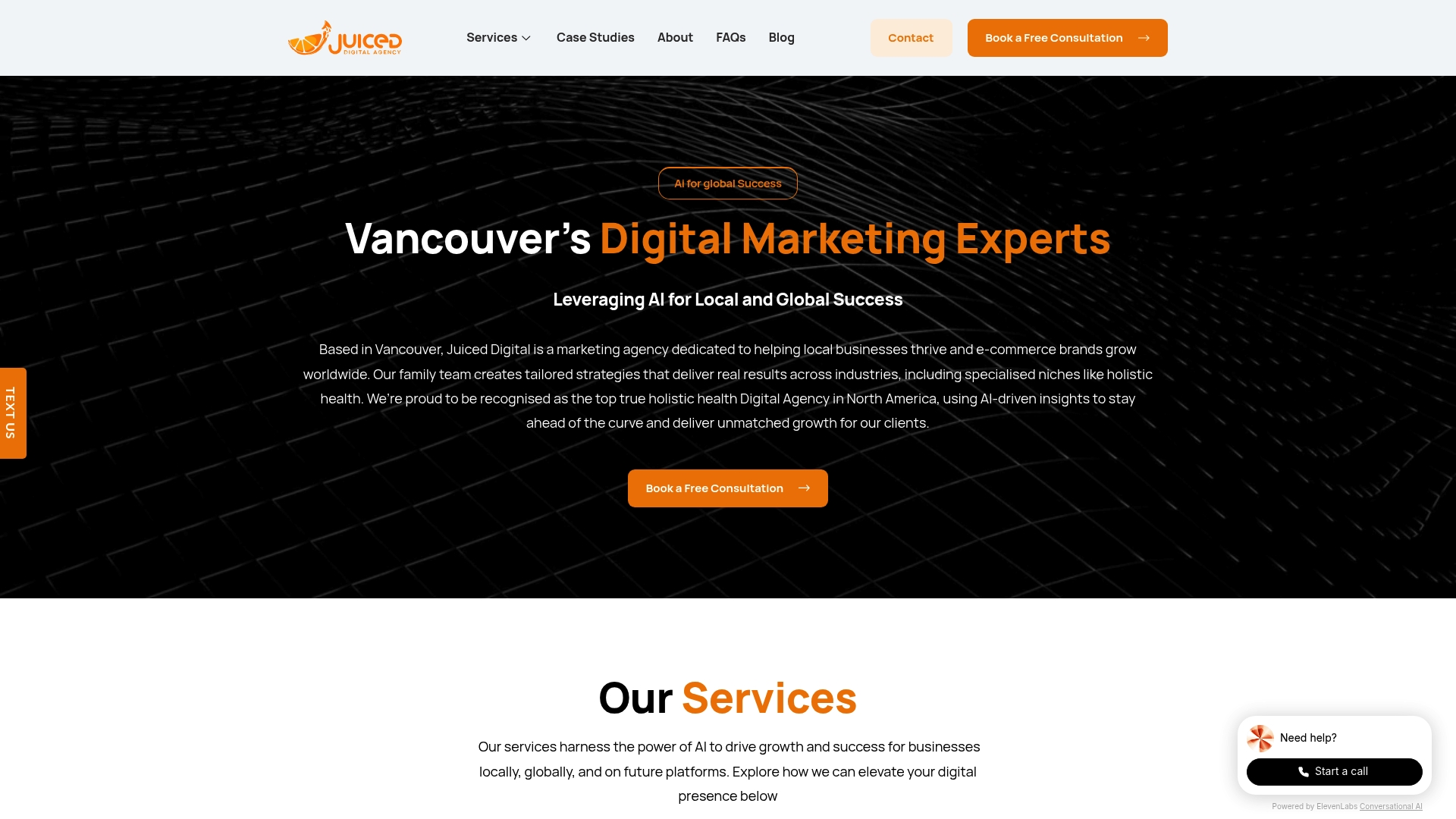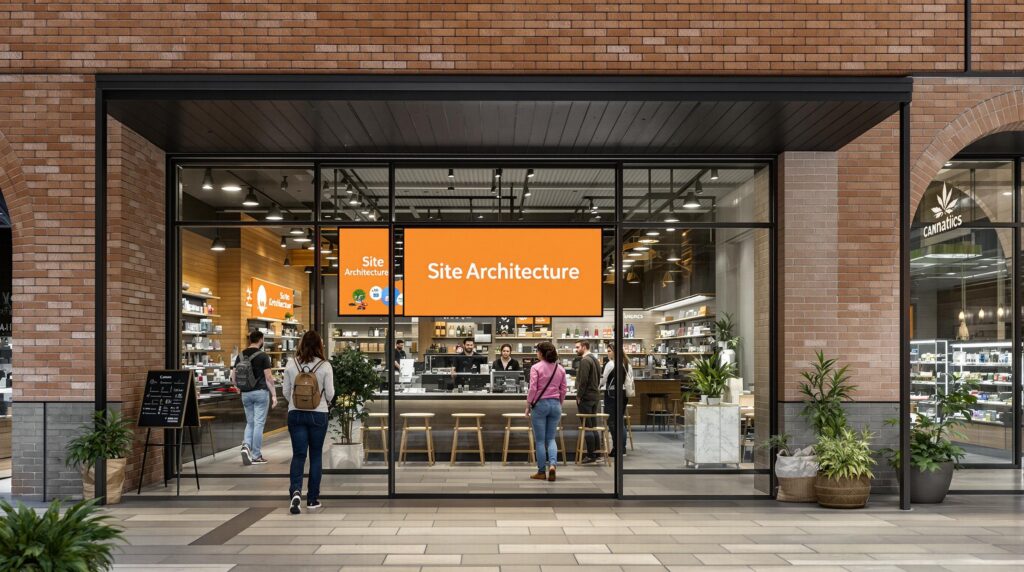
Site architecture shapes how your cannabis or local store shows up online. Over 60 percent of cannabis-related searches now happen on mobile devices. Here is the twist. Many businesses still bury important pages and display outdated info, risking both search rankings and frustrated customers. Simple changes to your website’s structure can drive more traffic and build serious trust with every click.
Table of Contents
- Why Site Architecture Matters For Seo Success
- Building An Seo-Friendly Site Structure For Local And Cannabis Stores
- Best Practices To Improve User Experience And Search Rankings
- Common Mistakes To Avoid With Site Architecture
Quick Summary
| Takeaway | Explanation |
|---|---|
| Crawlability and Indexing are Crucial | A logical, hierarchical site structure enhances how search engines crawl and index your website, ensuring important pages are discovered and ranked effectively. |
| User Experience Drives Rankings | Intuitive navigation reduces bounce rates and increases user engagement, which are essential ranking signals for search engines. |
| Strategic Internal Linking Improves Authority | Creating a network of internal links distributes link equity and helps search engines understand page importance, fostering a coherent content ecosystem. |
| Maintain Consistent Local Business Information | Consistency in Name, Address, and Phone (NAP) information across your site and directories is vital for local SEO performance and credibility. |
| Ensure Mobile Responsiveness and Speed | A mobile-friendly, fast-loading website significantly enhances user experience and is necessary for maintaining visibility in search results. |

Why Site Architecture Matters for SEO Success
Site architecture is the strategic blueprint that determines how your website’s pages connect, organize, and communicate with both users and search engines. For local businesses and cannabis stores, a well-designed site structure isn’t just a technical detail—it’s a critical competitive advantage in the digital marketplace.
The Crawlability and Indexing Advantage
Search engines rely on complex algorithms to discover and understand website content. Our guide on advanced SEO strategies reveals that site architecture directly impacts how efficiently search engines crawl and index your pages. A logical, hierarchical structure allows search engine bots to navigate your website more effectively, ensuring that critical pages are discovered and ranked appropriately.
According to Search Engine Land, a well-structured website architecture enhances search engine crawlability and indexability. This means creating clear pathways that guide search engine crawlers through your most important content, preventing valuable pages from getting lost in a confusing digital maze.
User Experience and Ranking Signals
Beyond technical considerations, site architecture profoundly influences user experience. Websites with intuitive navigation reduce bounce rates and increase user engagement—critical ranking signals for search engines. When visitors can easily find what they’re looking for, they spend more time on your site, sending positive behavioral metrics to search algorithms.
Research from Search Engine Land demonstrates that effective site architecture improves user experience by facilitating intuitive navigation. This translates into tangible SEO benefits: lower bounce rates, longer session durations, and increased likelihood of conversions.
Strategic Internal Linking and Authority Distribution
Internal linking is a powerful SEO technique embedded within site architecture. By creating a strategic network of links between related pages, you distribute link equity across your website. This approach helps search engines understand the relative importance of different pages and establishes topical relevance.
Strategic internal linking does more than improve crawlability. It creates a robust information ecosystem where each page supports and reinforces others. For local businesses and cannabis stores, this means creating clear content hierarchies that guide users through product categories, informational resources, and conversion paths.
A thoughtfully designed site architecture transforms your website from a collection of pages into a cohesive, search-engine-friendly platform. It’s not just about looking good—it’s about creating a digital environment that serves both user needs and search engine requirements. As the digital landscape becomes increasingly competitive, your site’s structural foundation can be the difference between visibility and obscurity.
Building an SEO-Friendly Site Structure for Local and Cannabis Stores
Creating an SEO-friendly site structure for local and cannabis stores requires a strategic approach that balances technical optimization with user experience. The digital landscape demands more than a simple website—it requires a carefully engineered digital ecosystem that guides both search engines and potential customers through your online presence.
Hierarchical Content Organization
Successful site architecture begins with a clear, logical hierarchy. For local cannabis stores, this means creating a structure that allows easy navigation between key sections like product categories, location information, educational resources, and purchasing options. Our comprehensive guide to dispensary SEO emphasizes the importance of creating intuitive pathways that help users and search engines understand your site’s content.
According to DeepRoots.io, optimizing site structure involves creating clear content silos. This means grouping related products and information into distinct, interconnected sections. For instance, a cannabis store might organize content into categories like medical products, recreational products, strain information, and educational resources.

Local SEO and Geographically Targeted Pages
For businesses with multiple locations, creating location-specific pages is crucial. First Rank highlights the importance of developing dedicated pages for each store location. These pages should include:
- Unique local contact information
- Specific store hours
- Location-specific product availability
- Embedded Google Maps
- Localized content and keywords
By implementing schema markup specific to local businesses, you provide search engines with clear, structured information about each location. ProGrowth Marketing recommends using LocalBusiness and Product schema to enhance search result visibility and provide rich, detailed information directly in search listings.
Technical Optimization and User Experience
Technical site architecture goes beyond simple page organization. Mobile responsiveness and site speed are critical factors that directly impact both user experience and search engine rankings. Cannabis stores must ensure their websites load quickly and function seamlessly across all devices.
Key technical considerations include:
- Responsive design that adapts to mobile, tablet, and desktop screens
- Fast loading times (under 3 seconds)
- Clean, semantic HTML structure
- Optimized images and minimal unnecessary scripts
- Secure HTTPS connection
A well-structured site architecture transforms your digital presence from a static online brochure into an dynamic, engaging platform. For local cannabis stores, this means creating a website that not only ranks well in search results but also provides an intuitive, informative experience for potential customers.
Remember, your site structure is more than a technical requirement—it’s your digital storefront, your first point of contact with potential customers. Invest the time and resources to build a robust, user-friendly, and search-engine-optimized digital environment.
To help clarify which technical elements play a role in site performance and SEO, here’s a table summarizing the key technical optimization factors and their impact:
| Technical Factor | Importance | Impact on SEO/User Experience |
|---|---|---|
| Responsive Design | Essential for all devices | Improves usability & mobile SEO |
| Fast Loading Times (<3 seconds) | Critical for retention | Reduces bounce rate, boosts rankings |
| Clean, Semantic HTML | Facilitates bot crawling and accessibility | Better indexability, accessibility |
| Optimized Images/Minimal Scripts | Reduces page size | Faster loads, better user experience |
| Secure HTTPS Connection | Protects user data | Google ranking factor, builds trust |
Best Practices to Improve User Experience and Search Rankings
Improving user experience and search rankings requires a multifaceted approach that goes beyond traditional SEO tactics. For local cannabis stores and businesses, creating a digital environment that seamlessly blends user-friendly design with search engine optimization is crucial for online success.
Optimizing URL Structure and Navigation
A well-designed URL structure serves as the foundation of both user experience and search engine performance. Our comprehensive SEO strategies guide emphasizes the importance of creating clear, descriptive URLs that provide immediate context about the page content.
According to SEOlogist, an effective URL structure should be:
- Concise and readable
- Descriptive of the page content
- Hierarchically organized
- Free from unnecessary parameters or complex strings
For cannabis stores, this might mean URLs like “/medical-products/cbd-oils” or “/locations/downtown-dispensary” that clearly communicate the page’s purpose and content.
Mobile Responsiveness and Performance
Mobile optimization has become non-negotiable in modern digital strategy. Research from ResearchGate highlights that Google prioritizes mobile-friendly websites, making responsive design critical for search rankings and user engagement.
Key mobile optimization strategies include:
- Implementing responsive design that adapts to different screen sizes
- Ensuring fast loading times across mobile devices
- Creating touch-friendly navigation elements
- Optimizing images and media for mobile consumption
- Minimizing intrusive pop-ups and interstitials
Content Accessibility and User Engagement
Engaging content that is easily accessible plays a pivotal role in both user experience and search rankings. This goes beyond simple text—it involves creating a comprehensive user journey that guides visitors through your website intuitively.
Effective strategies for improving content accessibility include:
- Clear and consistent navigation menus
- Intuitive site search functionality
- Breadcrumb navigation to show users their current location
- Logical content hierarchies
- Prominent calls-to-action
- Consistent design language across pages
By focusing on these key areas, local cannabis stores can create a website that not only ranks well in search results but also provides a compelling, user-friendly experience. Remember that search engines increasingly prioritize websites that offer genuine value and an exceptional user experience.
Ultimately, the goal is to create a digital environment that feels natural and intuitive. Your website should anticipate user needs, provide clear pathways to information, and make the journey from discovery to conversion as smooth as possible. In the competitive digital marketplace, those who master this balance will stand out and succeed.
Common Mistakes to Avoid With Site Architecture
Site architecture can make or break your online presence, particularly for local cannabis stores navigating a complex digital marketplace. Understanding and avoiding common pitfalls is crucial for maintaining a robust, search-engine-friendly website that attracts and retains potential customers.
Structural Complexity and Navigation Errors
One of the most prevalent mistakes in site architecture is creating overly complex navigation systems that confuse both users and search engines. Our advanced SEO strategies guide emphasizes the importance of intuitive website structures.
According to Budvue, cannabis businesses often make critical navigation errors such as:
- Creating deep, nested page hierarchies
- Using unclear menu labels
- Implementing inconsistent navigation across different pages
- Overloading menus with too many options
These structural mistakes can lead to poor user experience and reduced search engine crawlability. Visitors should be able to find information within three clicks, maintaining a flat and logical site structure that guides them effortlessly through your content.
To clearly identify the common navigation mistakes and their potential negative results, see the table below:
| Navigation Mistake | Potential Impact on SEO & UX |
|---|---|
| Deep, nested page hierarchies | Pages hard to find/crawl; poor ranking |
| Unclear menu labels | User confusion; increased bounce rate |
| Inconsistent navigation | Broken user journeys; lower engagement |
| Overloaded menus | Overwhelm users; decrease in conversions |
Inconsistent Local Business Information
Local cannabis stores face unique challenges in maintaining consistent online information. Canna Planners highlights the critical importance of maintaining consistent Name, Address, and Phone (NAP) information across your website and online directories.
Common NAP inconsistency mistakes include:
- Different phone number formats
- Variations in business name spelling
- Outdated location information
- Mismatched addresses across platforms
These inconsistencies can confuse search engines and potential customers, potentially reducing your local search rankings and credibility. Each variation can be interpreted as a separate business entity, fragmenting your online presence and diluting your SEO efforts.
Technical Performance and Mobile Optimization Failures
Technical performance remains a critical aspect of site architecture that many businesses overlook. BV Company reports that slow-loading websites and poor mobile optimization can dramatically impact user experience and search rankings.
Key technical mistakes to avoid include:
- Unoptimized image sizes
- Excessive use of heavy scripts
- Non-responsive design
- Slow server response times
- Lack of browser caching
With over 60% of cannabis-related searches occurring on mobile devices, a non-responsive website can effectively eliminate your online visibility. Search engines like Google prioritize mobile-friendly websites, making responsive design not just a recommendation, but a necessity.
Navigating the complex world of site architecture requires a strategic approach. By understanding and proactively addressing these common mistakes, local cannabis stores can create a digital presence that not only ranks well in search results but also provides an exceptional user experience.
Remember, your website is often the first interaction potential customers have with your business. Making it intuitive, consistent, and technically sound is not just about SEO—it’s about creating a digital storefront that reflects the quality and professionalism of your physical location.
Frequently Asked Questions
What is site architecture and why is it important for SEO?
Site architecture refers to the structural design of a website, including how pages are organized, linked, and presented. It is crucial for SEO because a well-structured site enhances crawlability, improves user experience, and ultimately boosts search rankings.
How can I improve my local cannabis store’s site architecture?
To improve site architecture for a local cannabis store, ensure you have a clear hierarchical structure, create location-specific pages, optimize for mobile responsiveness, and maintain consistent Name, Address, and Phone (NAP) information across your site and online directories.
What are common mistakes to avoid in site architecture?
Common mistakes include creating overly complex navigation, inconsistent local business information, and ignoring mobile optimization. These issues can confuse both users and search engines, negatively affecting search rankings and user experience.
How does mobile responsiveness impact SEO for cannabis stores?
Mobile responsiveness is essential as over 60% of cannabis-related searches occur on mobile devices. A mobile-friendly, fast-loading website enhances user experience, reducing bounce rates, and is a critical factor for search engines when ranking websites.
Transform Your Website Structure Into Real Revenue
Do you feel frustrated by lost leads and confusing menus? If you read about how poor site architecture can damage your traffic and local visibility, you already know why clear website structure matters. Google and your customers expect fast, intuitive journeys. Technical setbacks and outdated navigation lead to dropped rankings and customers who never return. See how our approach to SEO upgrades site architecture for local and cannabis businesses, and why our clients see measurable results.

If your store is buried beneath technical hurdles, act before your competition gets ahead. The team at Juiced Digital specializes in designing robust, search-friendly site structures that drive users exactly where you want them to go. Explore our Digital Marketing solutions or contact us now. Start building a seamless digital foundation that supports future growth and consistent leads today.
Recommended
- SEO for Small Businesses: Grow Local and Online in 2025 – Digital PR Expert | Digital Marketing & Search Leaders
- SEO for Dispensaries: Grow Your Cannabis Business in 2025 – Digital PR Expert | Digital Marketing & Search Leaders
- Search Engine Ranking Factors 2025 for Local & Cannabis Businesses – Digital PR Expert | Digital Marketing & Search Leaders
- SEO for Product Pages: Essential 2025 Guide for Cannabis & Ecommerce – Digital PR Expert | Digital Marketing & Search Leaders




